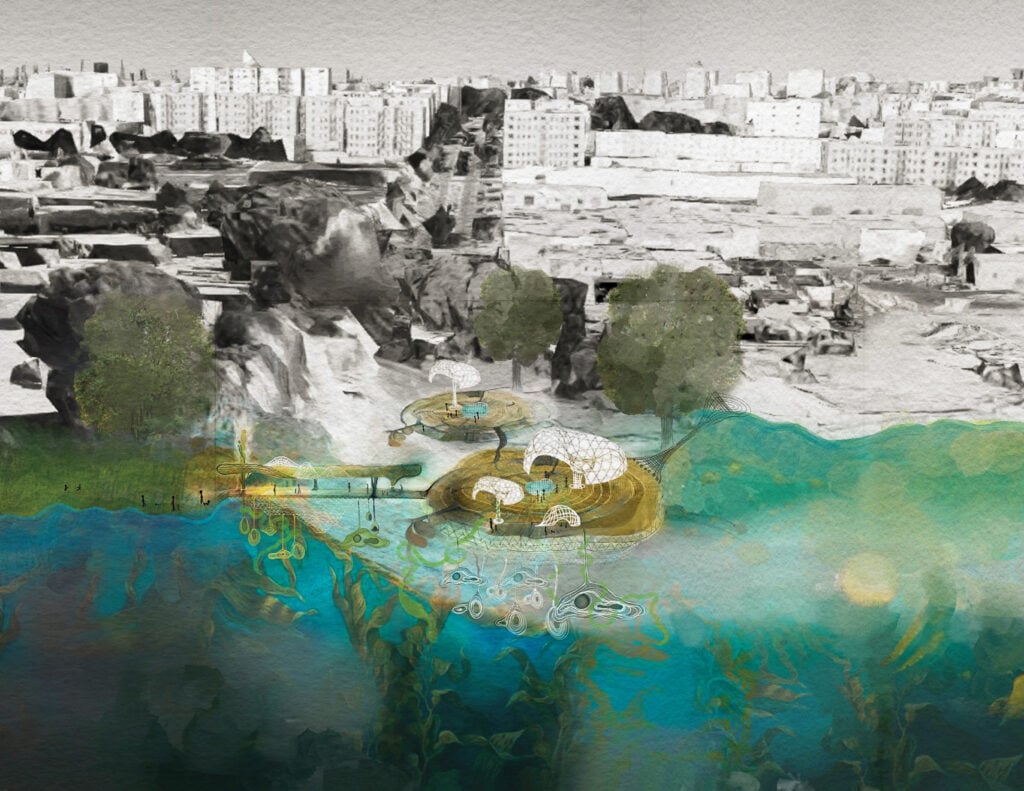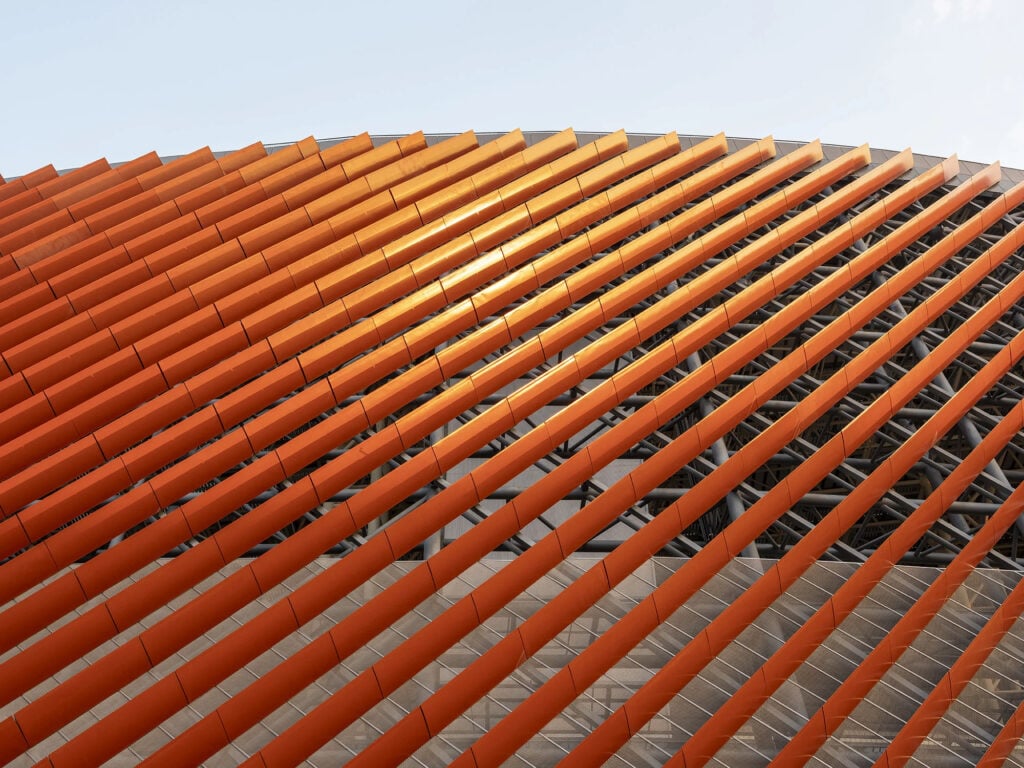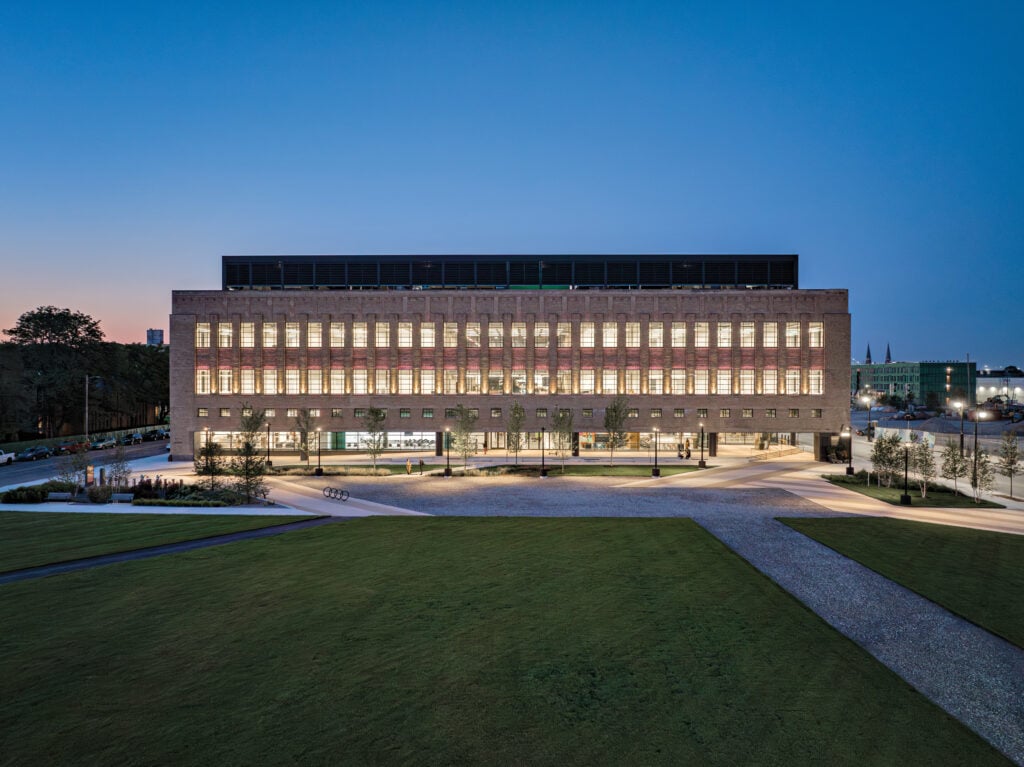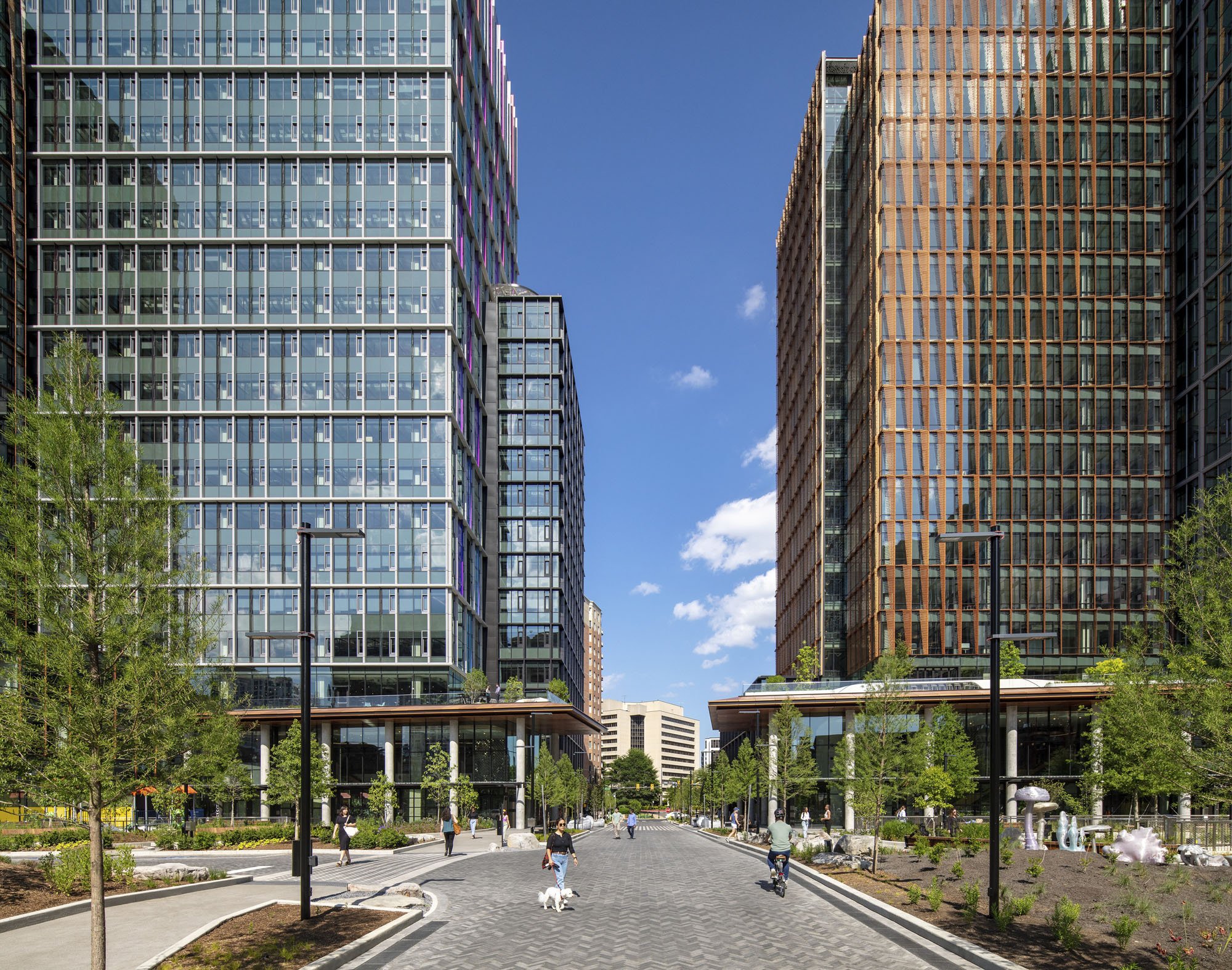
December 19, 2023
Amazon’s HQ2 Conceals its Agenda with the Latest Sustainability Strategies
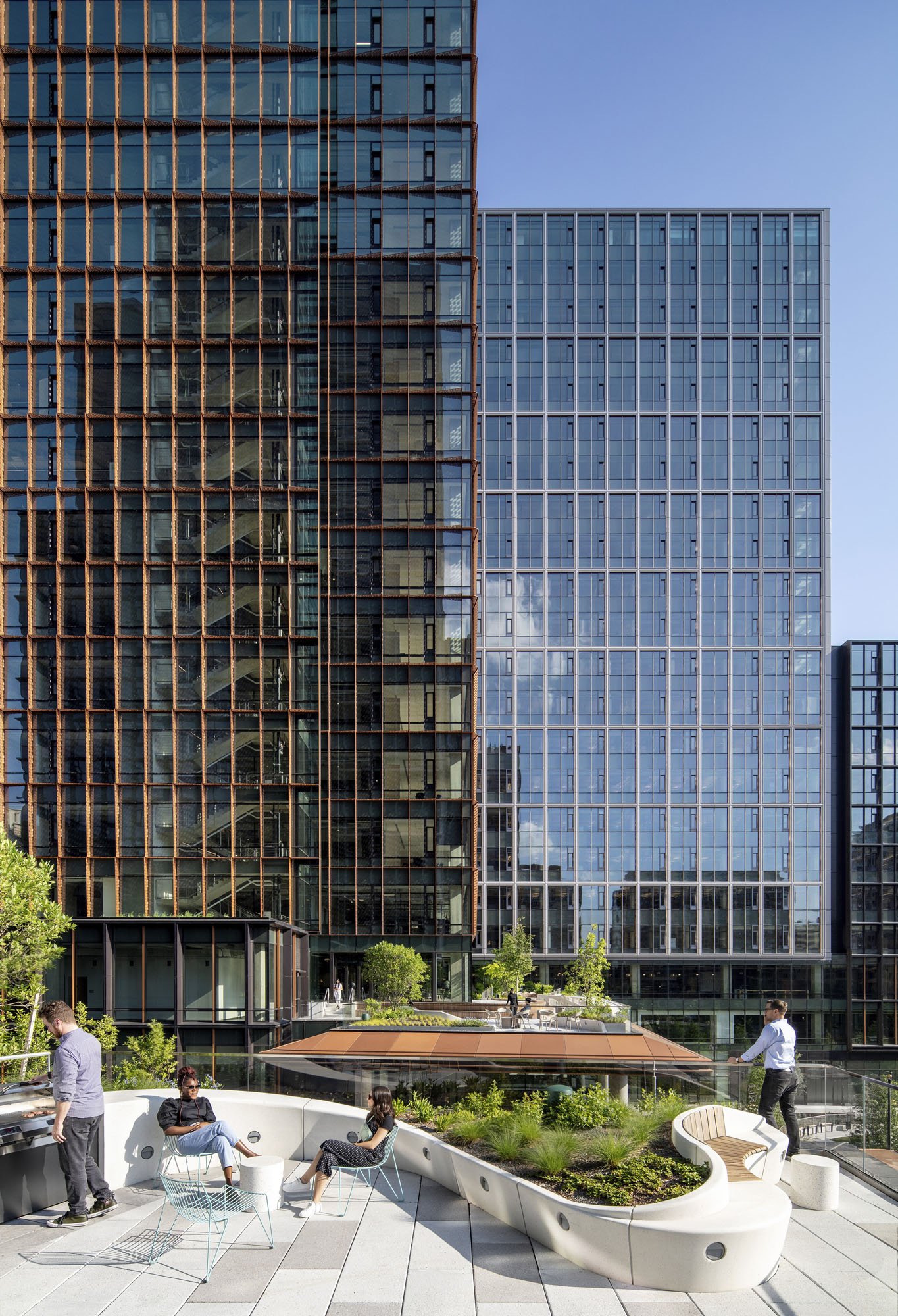

The Context for Amazon HQ2
Positioned right behind Washington National Airport, the area formerly known as Crystal City, Arlington has now been rebranded as “National Landing” or “NALA,” if codified in real estate jargon. The new complex sits within the Capital, White House’s sight line and other bastions of American power—and it’s no coincidence. The location is strategic given Amazon founder Jeff Bezos’ own political ambitions, or at least desire to exert some form of political influence. His résumé includes a sprawling mansion in the prestigious Kalorama neighborhood and ownership of The Washington Post for over a decade.
The idea of building a second campus first arose in 2017 when 20 North American cities were shortlisted as potential candidates. It was publicized as a competition asking each to plead their case based on the company’s rather broad set of criteria: proximity to major transportation hubs and a base population of 1 million residents. It essentially came down to a bidding war; determining which municipal or state government would offer the best tax breaks among other less forthright considerations.
Virginia offered the company a whopping $573 million in tax breaks, $23 million in cash with the hope that Amazon’s presence would help bring in at least $2.5 billion in economic incentive: new employment opportunities in construction, hospitality, and specialized tech. Northern Virginia is already home to numerous data infrastructure providers. Over 250 centers dot the surrounding area and many already support Amazon’s particularly lucrative Web Services franchise. How serendipitous—it almost seems as though the choice of this location was decided from the outset and that the competition was simply a marketing ploy presenting Amazon as magnanimous.
The company’s initial plan was to split its east coast outpost between National Landing and a site covering much of Long Island City, New York’s vast rail yards. That portion of the project was canceled in 2019 due to backlash from various organizations and politicians claiming the proposal was yet another excretion of corporate welfare with public funds being allocated to support business in the so-called guise of overall growth (with the reality that this complex would drive up the already exorbitant cost of rent in the area.) Why should such a rich and powerful company still need a tax incentive, even if not direct tax dollars per se, to take up shop in one place or another?

A Contrived Company-Town
Like so many other tech complexes and even more traditional company-towns, these types of urban developments risk becoming impenetrable fortresses implicitly and explicitly exercising control over, rather than bolstering, the surrounding community as evidenced by retail giant, Walmart, who transformed and essentially sterilized the city of Bentonville, Arkansas. Though its cultural offerings are rich, more so than nearby cities, there’s little room for anything else. The pastiche image of a downtown with eclectic shops is disingenuous and deceptive as everything erected is either in direct support of, or economic benefit to, one company and its singular vision. It’s a false image that overrides the larger realities of a region, its complexity, and history.
The horrors of history are contemporized as corporate America takes on a feudalistic dimension in these instances. Fabricated “districts” are not unlike the citadels of Medieval Europe, strategically engineered environments in which everyone living within “the wall” are forced to serve a single purpose or authority, with the somewhat precarious promise of protection. Regarding Amazon, the appearance of a porous, publicly accessible urban infill scheme in the form of HQ2 can only be viewed as suspicious. It remains yet another way for the company to conceal its ambition for greater influence in commerce and policymaking.
There’s also a greater long-term danger in allowing a company or political entity to put all its eggs in one basket. The Met Park complex will feature several small retail and hospitality spaces that are programmed to look and feel distinct but ultimately tie back to homogenized, corporate vision. It’s an obvious contradiction and feeble appeasement when considering the rampant decline in small businesses Amazon, if anything, has exacerbated.
In his critique of Amazon’s HQ2 and its contrived bidding scheme, Princeton University professor Steven Strauss cites the “winner’s curse” phenomenon. Bidders at auctions with equal advantage receive deceptive tip offs that inflate the value of the commodity for which they’re vying. The winner is, of course, the one with the most optimistic and overestimated offer. Ultimately, they’re “cursed” twofold. Overpaying for the asset, they’ll be unable to sell it off again without losing profit. In this instance, Virginia might be stuck with a major employer that, like many other modern capitalist companies flying too close to the sun, could very well fail one day. Though current predictions see that being unlikely for Amazon, the potential for instability remains. It’s undeniable that this new campus is simply another form of corporate and, especially in this case, plutocratic aggrandizement—Bezos’s spectacle to court D.C.
The question, however, is whether the design of this new neighborhood will be effective or fall victim to the “ghost town effect” evident in areas programmed expressly for business and nothing else: think New York’s Financial District and London’s Canary Wharf. Too often, such complexes are conceived and constructed so quickly that they fail to account for the potential of growth and organic adaptation, phenomena that require time to be actualized.
While Met Park and the larger NALA neighborhood will have an ample supply of residences, employees might not want to live so close to work or, along with visitors from other parts of the region, actually activate the various contrived shopping and food venues Amazon plans to disingenuously implant throughout the district. But this is a gamble Amazon is willing to take as long as other perceived benefits remain poignant.

Considering Urban Concepts
Urban infill seems neat and necessary, but what can actually be done to reflect and improve upon the environmental and social ecology already entrenched in an area? The term “placemaking” is often thrown around, especially by large architecture firms looking to justify the construction of large master plans in dense urban settings with already complex social and cultural histories they fail to serve. However, a rare few take the time to do their due diligence and achieve results that, to some measure, help assimilate a new building or suite of structures within their surroundings.
National practice ZGF has been able to, arguably, accomplish this with such projects as the adaptive reuse Spruce Goose office for Google and innumerable medical facilities. It is only with time, however, that the success of its design for two Amazon HQ2 condo buildings can fully be assessed. If anything, in its defense, answering a client’s demand with such lofty ambitions and sights on global domination isn’t easy.
Though the sprawling campus might seem generic, their charcoal-colored terracotta cladding is reflective of the 6.2-acre site’s history as a brickyard. It might seem contrived as an aesthetic gimmick but much of the design and programing of these two masonry cradled structures were determined, in part, through public review. Local residents partook in a seven month process in which a resounding consensus determined that—along with the need to strengthen the public realm through connectivity, mobility, and accessibility—these new buildings should serve as a continuum between the mid-rise downtowns of Arlington and Alexandria. ZGF answered the call by massing the structures with deep setbacks, allowing for a better flow of air and sunlight. The interior program is reflective of contemporary trends with various break out spaces and a striking art installation. New York landscape firm Field Operations was called in to develop the surrounding, otherwise underutilized green space. The practice transformed this area into an amenity that can also serve as a continuous forest walk reaching beyond the confines of NALA.
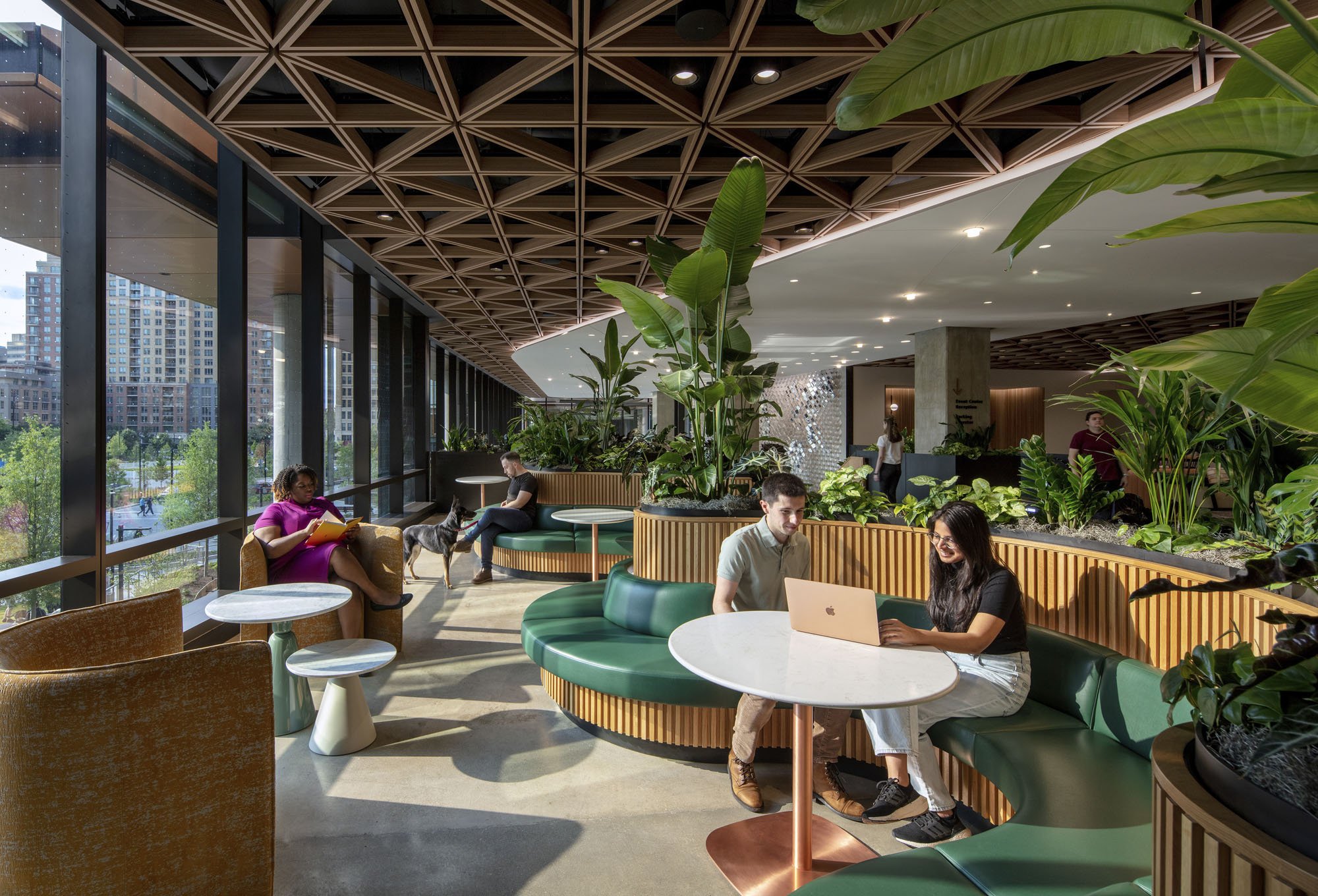
The Sustainability Litmus Test
Amazon HQ2 is making meaningful strides in their implementation of a hyper sustainable strategy. Enveloped by perforated copper-colored fins perched on scalloped light louvers, the two residential towers’ variegated facades vastly improve energy efficiency. The nearby Met Park office towers, built using low-carbon concrete, are completely powered by renewable energy. Recycled rainwater from roof and garage-mounted devices helps cut down significantly on water consumption. Much of these strategies borrow from pre-digital tropical architecture and in other instances, ancient solutions. They hit the mark both in-terms of mitigating embodied carbon emissions—the energy involved in construction and operational carbon emissions—how the entire campus will consume energy and incorporate building materials that can absorb it well into the future. Amazon is looking to achieve LEED Platinum certification and meet the Paris Climate Accord requirement by 2040, ten years before the established target to become net-zero.
While these feats are somewhat commendable and exemplary practices, is Amazon doing enough? Such an immense, domineering force could be moving the needle further. Given its vast financial means and ability to help foster innovation in other areas, why can’t they achieve net zero sooner or prioritize earth over space exploration? In addition, Amazon HQ2’s ability to fully account for social sustainability—truly answering the needs of the community and its different stakeholders or even fostering local economic growth—seems ambiguous at best.
Ultimately it comes down to affordability. Will this multimodal campus help alleviate the increased cost of living prolific everywhere while providing more places to commune, work, and engage in recreation? Or will this glimmering beacon of capitalist dominance find itself empty by the end of day? Manufacturing the growth of a local economy takes more than just constructing actual spaces. It requires public engagement and room for adaptation. Where Amazon HQ2 excels, however, is in its scaled-up demonstration of rigorous sustainability strategies. And yet, even these achievements seem minimal given the company’s means and scope of influence. Though shiny and new, this massive project is still indicative of the nefarious company town model forged out of corporate homogeneity and the implicit aim to bolster profits over anything else.
Would you like to comment on this article? Send your thoughts to: [email protected]
Latest
Profiles
Zoha Tasneem Centers Empathy and Ecology
The Parsons MFA interior design graduate has created an “amphibian interior” that responds to rising sea levels and their impacts on coastal communities.
Viewpoints
How Can We Design Buildings to Heal, Not Harm?
Jason McLennan—regenerative design pioneer and chief sustainability officer at Perkins&Will—on creating buildings that restore, replenish, and revive the natural world.
Products
Behind the Fine Art and Science of Glazing
Architects today are thinking beyond the curtain wall, using glass to deliver high energy performance and better comfort in a variety of buildings.



